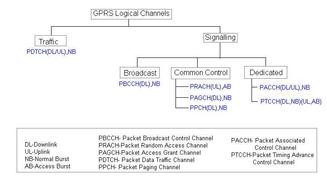Bit Error Probability (BEP) in GSM/GPRS/EDGE
Explore Bit Error Probability (BEP) in GSM/GPRS/EDGE networks, its calculation, and the derived parameters like CV_BEP and MEAN_BEP used for assessing radio link quality.
Showing 20 posts (Page 1 of 1)
Advertisement
Explore Bit Error Probability (BEP) in GSM/GPRS/EDGE networks, its calculation, and the derived parameters like CV_BEP and MEAN_BEP used for assessing radio link quality.

Explore GPRS, a packet-switched technology for data connections over GSM networks. Learn about its architecture, frame structure, channels, and more.
Explore the differences between EDGE and GPRS, focusing on data rates, modulation techniques, retransmission capabilities, and more. Understand how EDGE enhances GPRS.
Understand GPRS multislot classes, including class 12, 32, and 33, with details on maximum slots supported in uplink and downlink.
Overview of GPRS network interfaces (Um, Gb, Gn, Gp, Gi, Gr, Gc, Gf, Gd, Gs) in the transmission and control planes, detailing their functions and protocols.

Explore the GPRS protocol stack, detailing the functions of Layer 1, Layer 2, and Layer 3, including SM, GMM, SNDCP, LLC, RLC, MAC, and the physical layer.
Explore the relationship between RxQUAL (Receiver Quality) and BER (Bit Error Rate) in GPRS networks. Learn how RxQUAL relates to signal quality assessment.
Explore key terms related to GPRS (General Packet Radio Service), including frame structure, network nodes (SGSN, GGSN), coding schemes, interfaces, and related concepts.

Explore the pros and cons of GPRS (General Packet Radio Service) technology, including its compatibility, deployment, and data speeds.
Explore the key features and advantages of GPRS (General Packet Radio Service) in mobile data communication. Learn how it enhances GSM networks.

Learn about GPRS mobile measurements for conformance testing based on 3GPP standards, covering transmitter and receiver tests.

Explore the distinctions between GPS for location tracking and GPRS for data communication in wireless devices. Understand their applications, frequencies, and technologies.

Explore GSM and GPRS Radio Resource Control (RRC) state diagrams, including idle, dedicated, standby, and ready states. Learn how mobile devices transition between states for efficient network communication and resource management.

Learn about the packet switched (PS) call flow in GSM downlink for data transfer. Understand GPRS attach, PDP context activation, and the channels involved.
Explore GSM packet-switched channels, focusing on GPRS (CS1-CS4) and EGPRS (MCS1-MCS9) coding schemes at the physical layer. Understand data rates and robustness trade-offs.

Explore the packet switched (PS) data call flow in GSM uplink, detailing GPRS attach and PDP context activation between mobile devices and network elements.
Explore the fundamental differences between GSM and GPRS technologies, focusing on their architecture, timeslot allocation, traffic types, and network elements.
An explanation of different GSM/GPRS loopback test types (A, B, C, D, E, F, I, G/H) used for mobile phone performance testing, detailing their processes and target measurements.
A comprehensive list of GSM/GPRS modem manufacturers, suppliers, and vendors, enabling voice and data communication over GSM and GPRS networks.
Understand GSM/GPRS/EGPRS throughput, including coding schemes (CS1-CS4) and modulation (MCS1-MCS9), factors affecting data rates, and normalized throughput calculations.
Advertisement